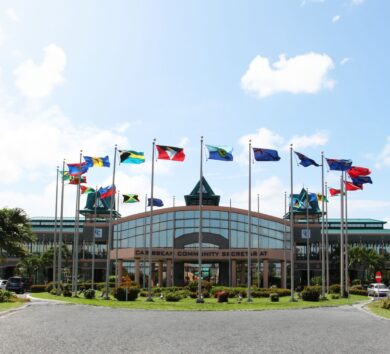
Contract tracing continues to be one of the most effective tools employed by the Ministry of Health and Wellness in containing the spread of the coronavirus (COVID- 19).
Simply put, it involves identifying and notifying persons, who may have come into contact with an infected individual, of potential exposure and then trying to control the outbreak of the disease by asking those people to self-quarantine.
The ministry has stepped up its contact-tracing activities as the country experiences the community transmission phase of the virus.
This phase is characterised by an increasing number of positive cases and the inability to easily trace transmission of the virus from one person to another.
Portfolio Minister, Dr Christopher Tufton, in declaring that the country had reached community transmission on September 2, said that “this stage of the pandemic will also mean that we will need to strengthen the infection prevention and control measures to reduce the rate of spread within the population and, more importantly, protect the vulnerable”.

Charmaine Vassell-Shettlewood, senior public health nurse, Kingston and St. Andrew Health Department, told the Jamaica Information Service that contact tracing was being actively pursued, with activities being conducted daily.
“Wherever we find clusters, teams are dispatched through the medical officer of health. We have cases that are scattered across Kingston and St. Andrew and we do contact tracing in any area where there is a positive case,” she said.
She noted that the process is conducted in a systematic manner, involving extensive and detailed case investigation.
First, the public health staff interviews COVID-19 positive persons to help them recall everyone with whom they have had close contact during the time frame when they may have been infectious.
The public health team then quickly alerts those close contacts that they may have been exposed to the COVID-19 virus. This is usually done within 24 hours.
The contacts are provided with education, information and support in order to better understand their risks, what they should do to isolate themselves from others who are not exposed, and to monitor themselves for illness.

Infected persons are also advised about the risks of spreading the virus to others.
Vassell-Shettlewood said a number of variables are used to determine the level of exposure to others. This critical information is revealed in the interview.
“We ask questions like, where did you go; with whom did you come into contact; were you in a closed building/car; was the air conditioning on; do you have any premorbid conditions; can you tell us the age distribution of these persons; how long did you spend with these persons?. All these are critical for us to classify and determine if they are low-risk or high-risk persons,” she explained.
Vassell-Shettlewood advised that line lists are generated for all persons of interest.
A line list is a table that contains key information about each case in an outbreak, with each row representing a case and each column representing a variable such as demographic, clinical and epidemiologic information (risk factors and exposures).
Line list information describes an outbreak in terms of person, place, and time. The line list may be created before or at the same time as administering a hypothesis-generating questionnaire.
“A line listing may be simple or it may be complex,” Vassell-Shettlewood said.
“With the simple line listing, the number of persons who may have been in contact with a person suspected of having the virus is limited, and the addresses of these persons are also limited. In a complex line listing case, the individual would have travelled to numerous locations and interacted with many persons,” she explained.

These lists are shared with the parish health department and the National Surveillance Unit within 24 hours, for follow-up of persons for up to 14 days as determined.
“We also do networking with the various health departments across the Ministry’s regions. In communities using contact tracing, clinics, labs and hospitals send the names of people who have recently been diagnosed with COVID-19 to their local health department,” Vassell-Shettlewood noted.
To minimise the spread of the virus, contacts are encouraged to remain at home and maintain social distance of at least six feet from others for a period of 14 days after their last exposure.
The incubation period of COVID-19, which is the time between exposure to the virus and symptom onset, is on average five to six days, but can be as long as 14 days.
Consequently, the Ministry of Health and Wellness advises that these persons undergo a 14-day quarantine from the last exposure to a confirmed case.
Contacts who develop symptoms should promptly isolate themselves and notify public health staff. They will be evaluated for infection and their need for medical care.

Persons found to be symptomatic, even in mild form, will be referred to a treatment facility.
Meanwhile, persons who are asymptomatic are assessed for either home or facility quarantine, based on their risk category and the period of quarantine.
Only persons designated as low risk will be managed at home for up to 14 days with quarantine instructions. For persons quarantined in their homes, the Health Department will make contact with persons of interest twice daily to perform temperature checks.
Article contributed by the Jamaica Information Service (JIS)







Comments